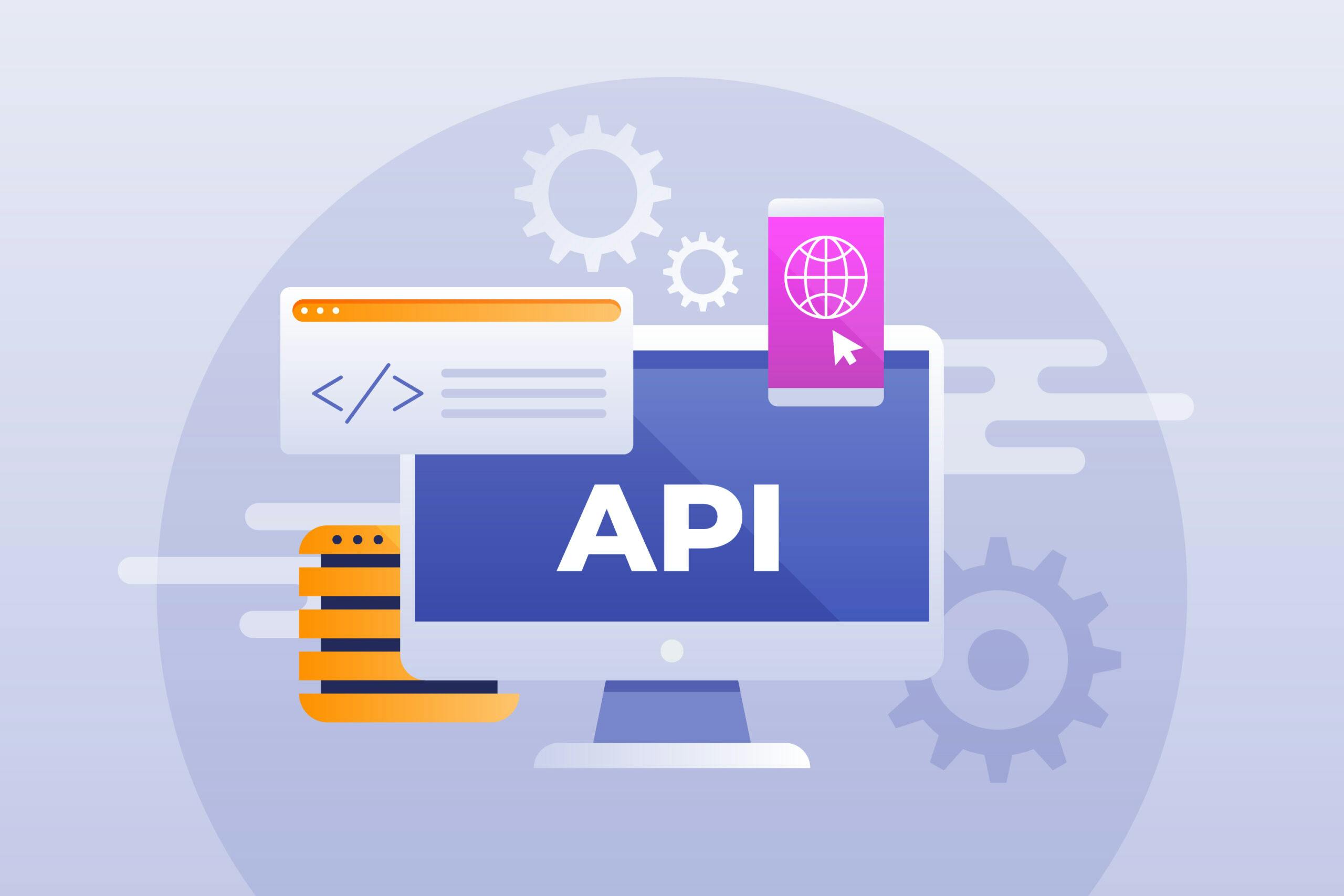Whether you are a full-stack web developer, a back-end engineer, or a front-end specialist, one common need binds all developers: the ability to create, manage, and distribute documents. This is where PDFs come into play. With consistent rendering across platforms and devices, security features, and widespread acceptance, they have become a staple in the digital ecosystem.
As a MERN stack developer, I’ve had my fair share of problems incorporating document functionality into my web applications. Despite being an exceptionally powerful technology for building dynamic and scalable web apps, the MERN stack presents its unique challenges regarding dynamic document generation.
However, PDF APIs have entirely changed the game. All you need to do is integrate a robust PDF API, and you no longer have to worry about document generation and manipulation. In this article, we will explore how PDF APIs have revolutionized the world of modern web development and discuss everything you need to know as a new developer to get started.
Common Challenges In Manual Document Creation
Let’s start by discussing some of the most common challenges modern-day developers face in manual document creation.
Time-consuming: Developers must generate documents like code review reports, error logs, database schema diagrams, performance reports, and contracts and agreements. These documents are highly complex and must be generated in large volumes. This can be extremely time-consuming and takes away time from the developer to focus on more critical tasks.
Error-prone: One of the most significant drawbacks of manual document creation is that it is prone to errors, like typos, formatting errors, and missing information, which result in customer dissatisfaction, financial losses, and even legal liability.
Difficult to scale: Manual documents are difficult to scale because generating them is often a labour-intensive process. Thus, they can not meet the needs of a growing business.
Inconsistent: There is a high possibility of inconsistencies in manual documents. Everyone has their own style, so if multiple people are working on different aspects of a document, you will get inconsistent formatting, style, and content, making it difficult for users to understand and use the documentation.
The Importance of Document Generation and Automation
Document generation and automation are essential aspects of modern-day development. Whether generating code review reports, error logs, database schema diagrams, deployment scripts, or performance reports, document generation and automation come in very handy.
As highlighted in a research paper called “API Development in Software Development” by Sardar Mudassar Ali Khan, APIs play a pivotal role in software development, enabling seamless communication between different software components [Reference]. This foundational role extends to document generation, where APIs facilitate the dynamic creation, management, and distribution of documents.
Let’s jump into some of the nitty gritty and explore some of the common benefits of generation and automation for modern-day developers.
Increased efficiency: No developer can start working on a project without comprehensive documentation detailing every tiny detail that requires construction. This paperwork helps guide them through each phase of the build. However, despite heavily relying on thorough documentation, developers often loathe the process of creating these documents themselves. So, whenever there’s an opportunity to automate this tedious and time-consuming task, they greet it with open arms. Thus, document automation helps increase efficiency and allows developers to focus on what they do best: coding.
Reduced errors: The last thing you want as a developer is to build a module and find out that there was an error in the documentation. Not only does this lead to a waste of time, but it also causes several other problems, including customer dissatisfaction, financial losses, and even legal liability.
Enhanced compliance: When building a software product, engineers must ensure compliance with industry regulations and standards. Otherwise, they might end up having to pay heavy fines and penalties. Document generation and automation are pivotal in ensuring businesses adhere to industry regulations and standards through audit trails, template control, data accuracy, access control, and timely reporting.
Improved scalability: Document generation and automation can help businesses to scale their operations more efficiently. Document generation and automation can help businesses generate and manage large volumes of documents with minimal effort.
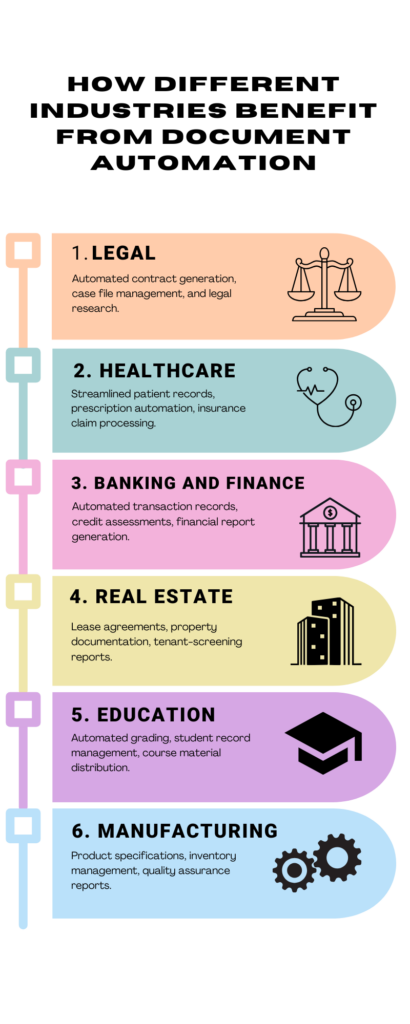
Practical Uses of Document Generation for Developers
Here are some specific examples of how modern-day developers can use document generation and automation to improve their workflows:
Generate reports: Document generation and automation help developers generate accurate and consistent reports from data stored in databases or other data sources, which can help them save a lot of time and effort.
Create invoices: Document generation and automation comes in handy when developers need to create invoices for customers. It streamlines an otherwise tedious and time-consuming checkout process and improves the overall customer experience.
Generate contracts and agreements: Most software companies have dedicated teams specialising in making contracts and agreements. However, no matter how good your team is, they are prone to errors. Document generation and automation help generate these contracts and agreements automatically, reduce the risk of errors, and ensure that contracts and agreements comply with all applicable laws and regulations.
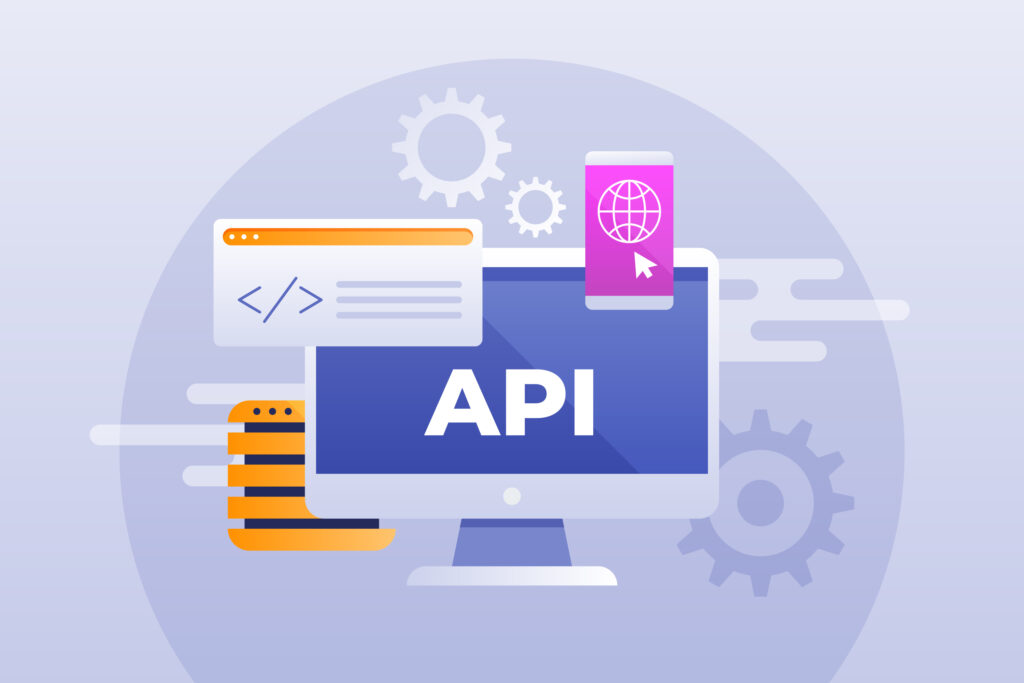
Overview of PDF Generator API and its Features
As mentioned earlier, efficient document generation is one of the most critical aspects of building successful software products. Whether you want to generate invoices, reports, or any other type of document, you will require powerful and easy-to-integrate tools. Introducing PDF Generator API. It is a comprehensive solution tailored to modern applications’ dynamic needs. Here is what PDF API Generator has to offer.
User-Centric Design: PDF Generator API does not require you to have deep technical knowledge. It has an intuitive interface that everyone can use.
Versatility: Whether you are running a small start-up looking to automate monthly invoice generation or you are a large corporation with large document generation needs, PDF Generator API will not disappoint. It scales according to the user’s needs and offers optimal performance at all times.
Easy Integration: PDF Generator API is extremely easy to integrate; the comprehensive API documentation makes it easy to implement.
Cost-Effective Solution: PDF Generator API offers different price points, ensuring businesses of all sizes can use it without breaking the bank.
Commitment to Security: Every developer understands the importance of data security and only trusts third-party resources that ensure state-of-the-art encryption and stringent data protection protocols. With PDF Generator API, users can rest assured that their data is safe.
The MERN Paradigm and Document Flow
The MERN stack is one of the most popular JavaScript frameworks for developing modern web applications. It comprises four components: MongoDB, Express.js, React, and Node.js, which combine to create a seamless web development experience.
There are multiple ways to implement document generation into a MERN application; however, one of the most common and easiest approaches is using a PDF generation API to generate PDF documents from MongoDB data. You can store these generated documents in MongoDB or serve them directly from the node.js backend to your users.
PDFs offer several advantages for MERN applications, including:
Ubiquity: PDFs are one of the most widely used and supported formats and can easily be opened on almost all modern-day devices and platforms.
Security: PDFs offer increased security as they can be encrypted to protect sensitive data.
Rich features: PDFs can incorporate a wide range of features, including images, tables, charts, graphs, and hyperlinks.
Unique features
Time-Saving for Developers: One of the reasons why PDF Generator API stands out is that it offers a dedicated solution for PDF generation. This helps developers save valuable time and eliminates the need to build this functionality from scratch.
Free Sandbox Account: With PDF Generator API, you get a free Sandbox Account for 30 days, which you can use to integrate the API without paying any money upfront. You can make up to 2,500 merges in the first month, giving you plenty of time to thoroughly test it.
MERN Stack Example
Let’s take the example of the MERN stack to see how a PDF API generator holds up in a real-world coding environment.
- Start by setting up an endpoint to fetch data from MongoDB.
- Use this data to make a request to PDF Generator API and get the generated PDF.
- Create a button or a link that, when clicked, calls the backend endpoint to generate the PDF.
- You can also use Postman if you haven’t set up your front end yet.
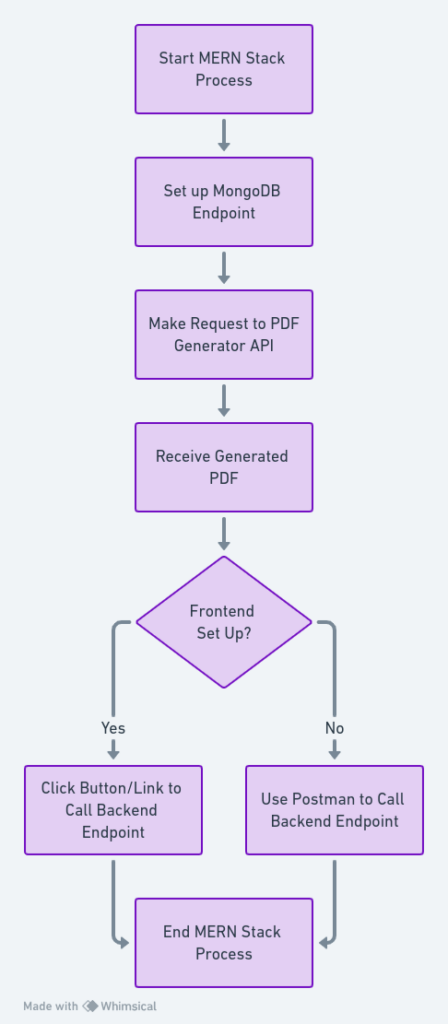
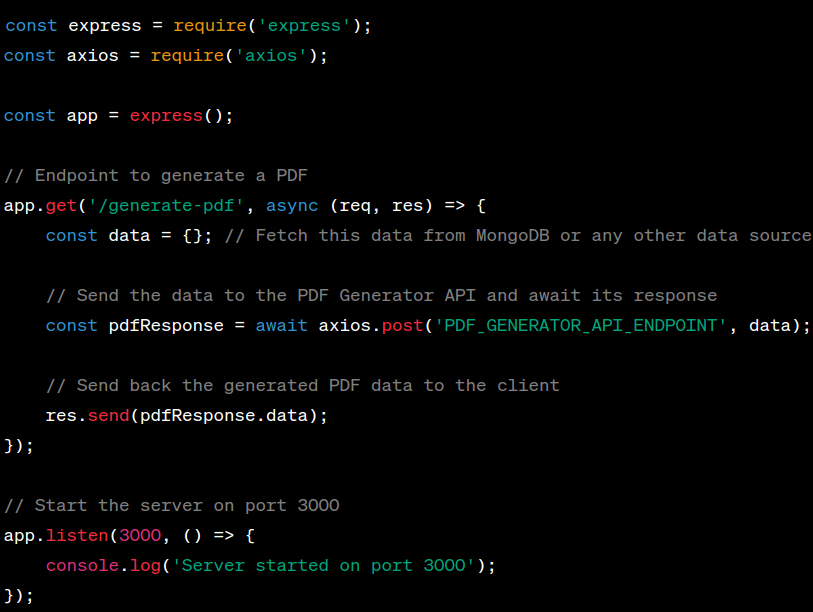
How-to Integrating PDF Generator API with Python
- Start by designing a PDF template using the web-based editor provided by PDF API Generator.
- Then, fetch the data you want to populate your template with.
- Make a request to the PDF Generator API with that data.
- Receive the generated PDF as a response.
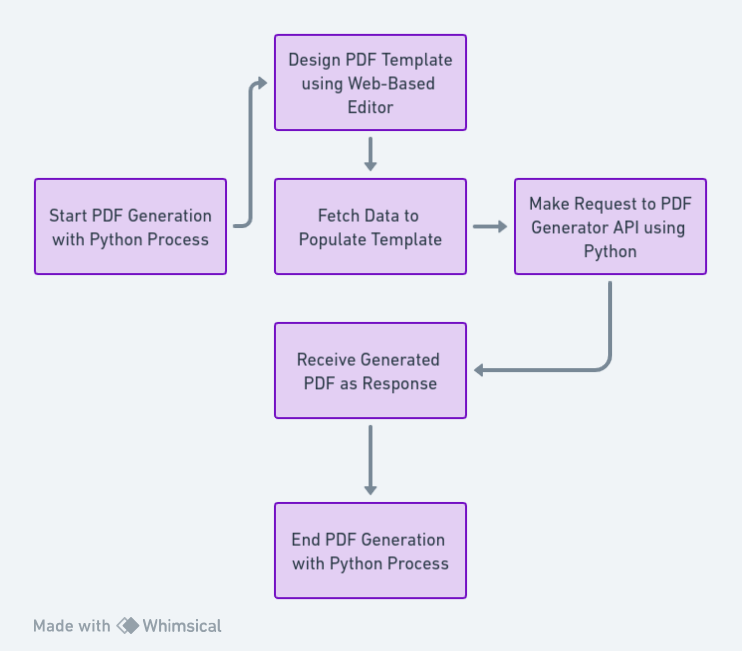
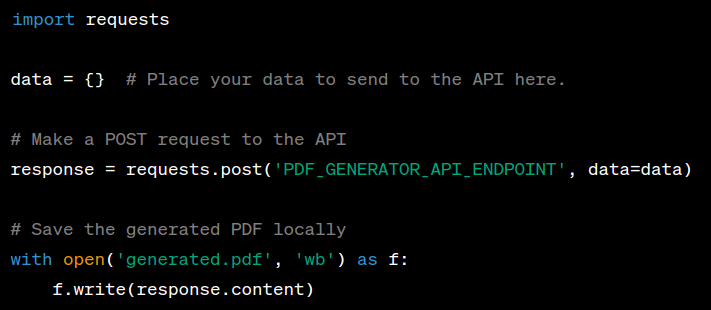
Conclusion
There is a great need for efficient generation, management, and distribution of documents across platforms for developers. Developers use PDFs as the default document format because of its consistent rendering and security features. With tools like PDF Generator API, the task of document generation has become easier than ever before. Developers can now leverage such tools to revolutionize their document management processes and ultimately increase the efficiency and effectiveness of their software products.
